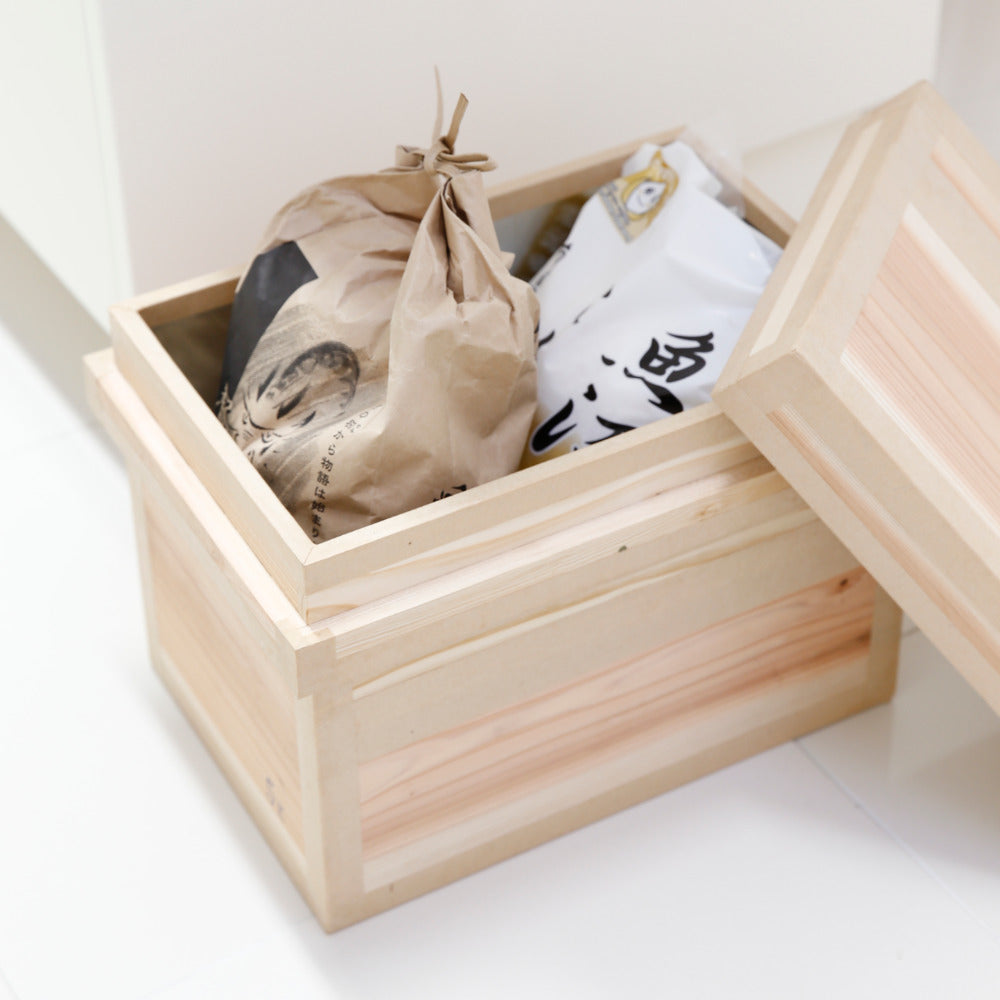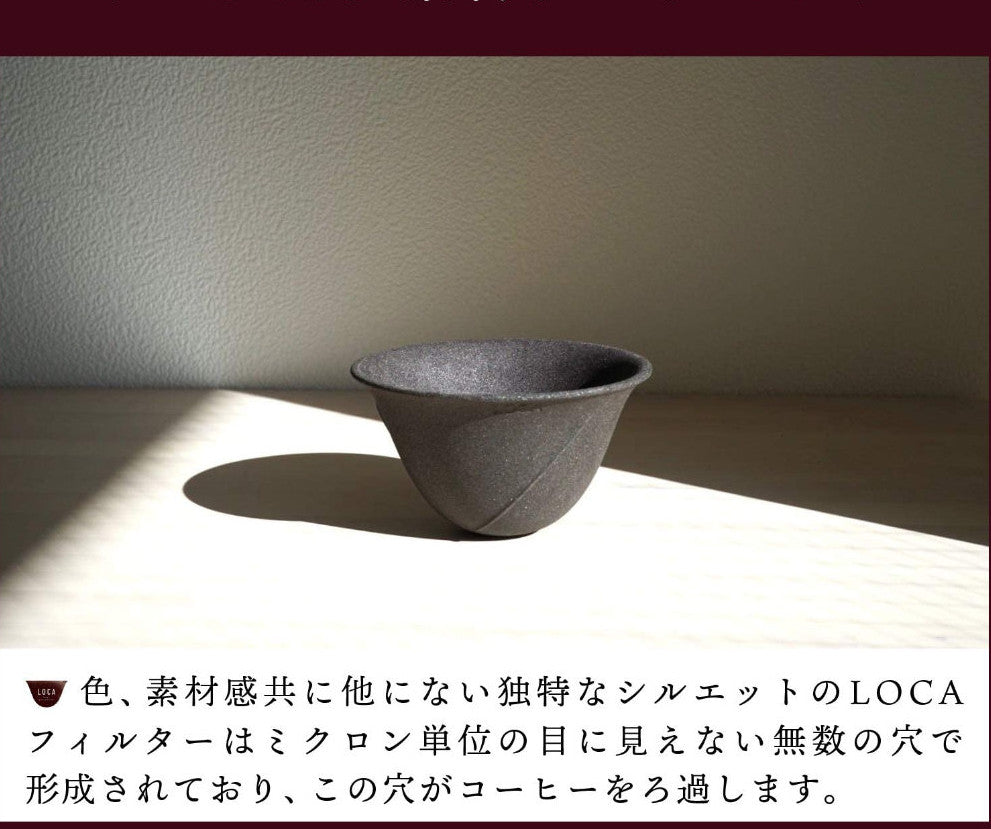Au XIXe siècle, le Japon a développé le Chabako pour l'exportation du thé à l'étranger. Les Japonais ont apposé des étiquettes colorées sur les boîtes, faisant découvrir au monde occidental les estampes et le design japonais Ukiyoe. Avec des estampes sur bois multicolores montrant le sens du design unique du Japon, quelques-uns de ces modèles existent encore et sont parfois exposés.







Chabako : Cha = Thé / Bako = Boîte sont des boîtes en bois datant de l'ère Meiji et utilisées à l'origine pour exporter du thé japonais à l'étranger. Dotées d'excellentes qualités de résistance à l'humidité, aux insectes et à l'oxydation, elles ont été créées pour « conserver les feuilles de thé fraîches et les transporter en toute sécurité ». Fabriquées avec une doublure en fer galvanisé (étain) à l'intérieur d'un cadre en bois de cèdre japonais fabriqué par un artisan qualifié, elles sont censées durer plus de 100 ans.
Création du Chabako :

Le bois de cèdre japonais de 30 ans est exposé aux éléments (pluie et vent) pendant deux mois, puis plongé dans l'eau, aplati en les empilant et en plaçant de lourdes pierres dessus jusqu'à ce qu'ils soient complètement secs. Cela renforce le bois et empêche la déformation. La doublure métallique à l'intérieur de la boîte renforce la fonctionnalité et est fixée et coupée à la taille souhaitée avec des ciseaux spéciaux. Enfin, des bandes de ruban Washi (papier japonais) sont utilisées pour recouvrir tous les côtés et les coins de la boîte afin d'améliorer sa durabilité.

La fabrication du chabako est un processus minutieux, un exercice d'équilibre et d'adéquation constant entre le bois disponible et les pièces nécessaires à la fabrication d'une boîte de taille particulière. Des artisans qualifiés et dévoués traitent méticuleusement chaque étape pour créer une boîte de rangement hautement fonctionnelle et durable qui dure plus d'un siècle.

Les cinq derniers fabricants de Chabako :
Le rôle originel du Chabako (conserver et transporter les feuilles de thé) a presque disparu en raison de l'émergence des boîtes en carton et des emballages en aluminium. Certains matériaux essentiels au Chabako ont disparu, comme les feuilles de métal fabriquées spécifiquement pour le Chabako et les rubans Washi. En mai 2021, il ne restait plus que cinq fabricants de Chabako au Japon. Le Chabako reste une industrie en voie de disparition. Afin de maintenir cette tradition en vie, ces entreprises trouvent de nouvelles utilisations pour le Chabako comme boîtes de rangement intérieures dont les dimensions sont adaptées à la vie moderne.
L' atelier Maeda fabrique du Chabako depuis 3 générations . Maître Maeda est réputé pour son savoir-faire et a été récompensé pour son excellent savoir-faire par la préfecture de Shizuoka. Shizuoka, où se trouve le Mont Fuji, est l'une des plus grandes régions productrices de thé du Japon en raison de la température, de l'eau propre qui vient des Alpes du Sud et de sa proximité avec les principaux ports. Il a commencé son apprentissage à l'âge de 15 ans, peu de temps après la fin de la Seconde Guerre mondiale, en aidant son père à fabriquer du Chabako. Au cours des 65 dernières années, il a consacré sa vie à la création du Chabako. Dans ses dernières années, Maître Maeda a commencé à former de jeunes artisans à son métier, afin de transmettre la culture et les compétences acquises aux générations futures. Aujourd'hui, ses élèves continuent son travail sous sa surveillance, créant du Chabako avec le même soin et la même précision que leur maître.

La force de Chabako :
Le premier thé japonais aurait été exporté en Europe depuis Hirado, Nagasaki, en 1610 par la Compagnie néerlandaise des Indes orientales. Cependant, sans le chabako, les feuilles de thé n'auraient pas pu supporter les conditions longues et impitoyables du voyage à bord des navires et le commerce n'aurait pas duré longtemps. Le chabako a évolué avec succès pour devenir une boîte de stockage/transport idéale pour conserver les feuilles de thé fraîches, en les éloignant efficacement de l'humidité et des insectes et en les empêchant de s'oxyder. Le chabako s'est avéré être la solution la plus efficace aux problèmes des voyages maritimes difficiles comme c'était le cas à l'époque. Les étrangers qui s'installaient au Japon ont ainsi découvert le chabako, ce qui a par la suite conduit à la naissance du « chabako recouvert de tissu » au sein de la communauté étrangère au Japon.

D'où vient la haute fonctionnalité ?
Pour commencer, l'utilisation du bois de cèdre japonais (Sugi) est la première défense de la boîte. Le Sugi a un effet anti-insectes et anti-humidité élevé. Il a moins d'arôme et de sève que les autres bois, il n'interfère donc pas avec l'odeur délicate du thé. De plus, en installant du fer galvanisé (étain) à l'intérieur du cadre en bois, les propriétés anti-humidité, anti-insectes et anti-oxydation sont considérablement améliorées. Avant le fer galvanisé, ils utilisaient des doublures telles que du papier Washi imbibé d'astringent kaki. À la fin de l'ère Meiji, le fer galvanisé est entré en scène et a progressivement remplacé les autres alternatives. De plus, du ruban adhésif en papier Washi est utilisé à chaque coin de la boîte pour renforcer la structure. Le Washi est connu pour être l'un des matériaux les plus durables, préféré aux tissus.





Tailles et types :
Les tailles de Chabako sont exprimées en xxK ou xxKS. K est le kilogramme. Cela signifie que la boîte peut contenir xx kg de feuilles de thé. KS est K « Squat », ce qui signifie qu'il est plus bas en hauteur que le K correspondant et qu'il contient environ la moitié du volume. Par exemple, 1K = 1 kg de feuilles de thé, 1KS = 500 g de feuilles de thé. Nori-S et Nori-M, ils transportaient des feuilles de Nori (feuilles d'algues). Nori-S transportait 100 morceaux de Nori et M transportait 200 morceaux de Nori.




Entretien du Chabako :
- Nettoyage du bois : Essuyer avec un chiffon sec. Éviter d'utiliser du détergent.
- Nettoyage de l'étain / du fer galvanisé : essuyez avec un chiffon humide et séchez.
- Ne vous asseyez pas et ne vous tenez pas debout sur une boîte non fortifiée.
- Ne pas fixer de roulettes ou de charnières sur une boîte non renforcée.
- Le couvercle ne sera pas bien ajusté. Cela n'empêche pas l'étanchéité de la boîte.
Veuillez visiter notre magasin pour voir notre nouvelle sélection de Chabako :
JAPON MEILLEURE BOUTIQUE DE PARIS :
Arcs & Flèches Paris :
17, rue Notre-Dame-de-Nazareth
75003 Paris, France
Horaires d'ouverture :
Du mardi au samedi, de 12h30 à 19h30
Téléphone:
09 83 70 76 98




